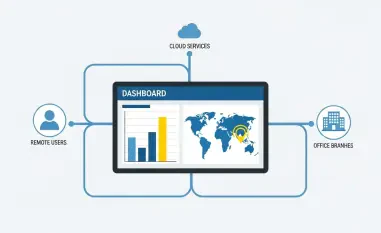Cisco has recently issued a critical security advisory alerting users to multiple vulnerabilities found in its ATA 190 Series Analog Telephone Adapters, which include the ATA 191 and ATA 192 models. These vulnerabilities pose significant risks to network security, as they can be exploited by remote attackers to execute arbitrary code and take control of affected devices. Given the importance of these devices in organizational communication systems, it is crucial for stakeholders to understand the nature of these vulnerabilities, their impact, and the recommendations for mitigation.
The vulnerabilities detected in the ATA 190 series are primarily due to weaknesses in input validation, authorization verification, and sanitization processes. One critical vulnerability, designated as CVE-2024-20458, allows unauthenticated remote attackers to view or delete configurations and change firmware due to a lack of authentication on specific HTTP endpoints. This flaw has a high-security impact rating with a CVSS score of 8.2. Unauthenticated attackers exploiting this flaw could ultimately manipulate the device to serve malicious purposes, which poses a significant risk and underscores the critical need for swift mitigation measures.
Another significant issue, CVE-2024-20421, is a cross-site request forgery (CSRF) vulnerability. This weakness enables attackers to perform arbitrary actions on affected devices by persuading users to click on crafted links, carrying a high-security impact rating with a CVSS score of 7.1. Additionally, CVE-2024-20459 is a command injection vulnerability that allows authenticated attackers with high privileges to execute arbitrary commands as the root user on the underlying operating system. This flaw has a medium security impact rating with a CVSS score of 6.5. Collectively, these vulnerabilities reflect a broad spectrum of potential attack vectors that could compromise the operational integrity and security of the affected devices.
Broader Security Challenges Highlighted by These Flaws
The discovery of these security flaws in Cisco’s ATA 190 series underscores a growing trend of sophisticated vulnerabilities targeting network infrastructure devices. Attackers are becoming increasingly adept at exploiting weaknesses in web-based management interfaces and command-line interfaces (CLI) to gain unauthorized access and control. This rise in complexity and sophistication of attacks emphasizes the need for continuous vigilance and proactive security measures. Devices such as the ATA 190 series, integral to organizational communication, serve as an attractive target due to their critical role and the valuable data they handle.
Moreover, the vulnerabilities in the ATA 190 series reflect the broader cybersecurity challenges faced by organizations today. With the increasing reliance on VoIP technologies for communication, securing these systems has become more critical than ever. Ensuring robust security for such integral components can mitigate risks and prevent potentially severe impacts on business operations. These vulnerabilities serve as a reminder of the evolving threats and underscore the necessity for regular updates, patch management, and adherence to best practices in cybersecurity to protect vital communication infrastructure.
The identified vulnerabilities also highlight the importance of comprehensive security testing and audits for network devices. Organizations must prioritize these practices to detect and address potential weaknesses before they can be exploited by malicious actors. The complexities of modern cyber threats demand that both companies and individuals take proactive measures to safeguard their communication systems against breaches that could lead to significant operational disruptions and financial losses. By understanding these broader security challenges, stakeholders can better prepare and respond to emerging threats, ensuring the resilience of their network infrastructure.
Cisco’s Mitigation Recommendations
In response to these critical vulnerabilities, Cisco has promptly released firmware updates designed to address the identified issues. The company strongly urges users to apply these updates to secure their devices against potential exploits. It is noteworthy that no direct workarounds for these vulnerabilities are available, underscoring the importance of implementing the provided firmware updates swiftly. Applying these updates is critical, as it directly addresses the fundamental security flaws, thereby mitigating the risk of unauthorized access and control by attackers. By keeping the firmware up-to-date, organizations can ensure the continued security and functionality of their ATA devices.
For some specific vulnerabilities, Cisco recommends disabling the web-based management interface in certain configurations as a mitigation measure. However, this is only a temporary solution, and applying the firmware updates remains the most effective way to neutralize the risks. Disabling the web-based management interface can reduce the attack surface and provide a layer of protection in the interim, but the enduring solution lies in the comprehensive fixes provided by the firmware updates. Organizations must balance these interim measures with the urgency of applying permanent fixes to maintain robust security.
Cisco’s advisory highlights the critical role of vigilant maintenance and timely updates in securing network infrastructure. In the rapidly evolving landscape of cybersecurity threats, having a proactive approach to device management is essential. Regularly checking for and applying updates not only addresses current vulnerabilities but also fortifies systems against future potential exploits. The timely advisories and updates from Cisco reflect a commitment to security, but it is up to the users to act promptly and decisively to protect their systems. The interplay between Cisco’s rapid response and user action is fundamental to maintaining a secure communication environment.
Importance of Proactive Network Security Measures
Cisco recently issued an urgent security advisory revealing multiple vulnerabilities in its ATA 190 Series Analog Telephone Adapters, including the ATA 191 and ATA 192 models. These flaws are serious threats to network security because remote attackers could exploit them to run unauthorized code and take control of the devices. Given the crucial role these adapters play in organizational communications, stakeholders must understand the vulnerabilities’ nature, impact, and mitigation strategies.
The detected issues in the ATA 190 series stem from weaknesses in input validation, authorization checks, and sanitization processes. One major flaw, CVE-2024-20458, allows unauthenticated remote attackers to view or delete configurations and change firmware due to absent authentication on certain HTTP endpoints. This vulnerability has a high severity rating with a CVSS score of 8.2. Exploitation by attackers could lead to device manipulation for malicious purposes, highlighting the urgent need for remediation.
Another notable issue, CVE-2024-20421, involves cross-site request forgery (CSRF). This allows attackers to make users perform unauthorized actions on affected devices by clicking crafted links, with a CVSS score of 7.1. Additionally, CVE-2024-20459 is a command injection flaw letting authenticated, high-privilege users execute arbitrary commands as root on the operating system, with a CVSS score of 6.5. Together, these vulnerabilities present various attack vectors that could compromise the security and operation of the affected devices.













